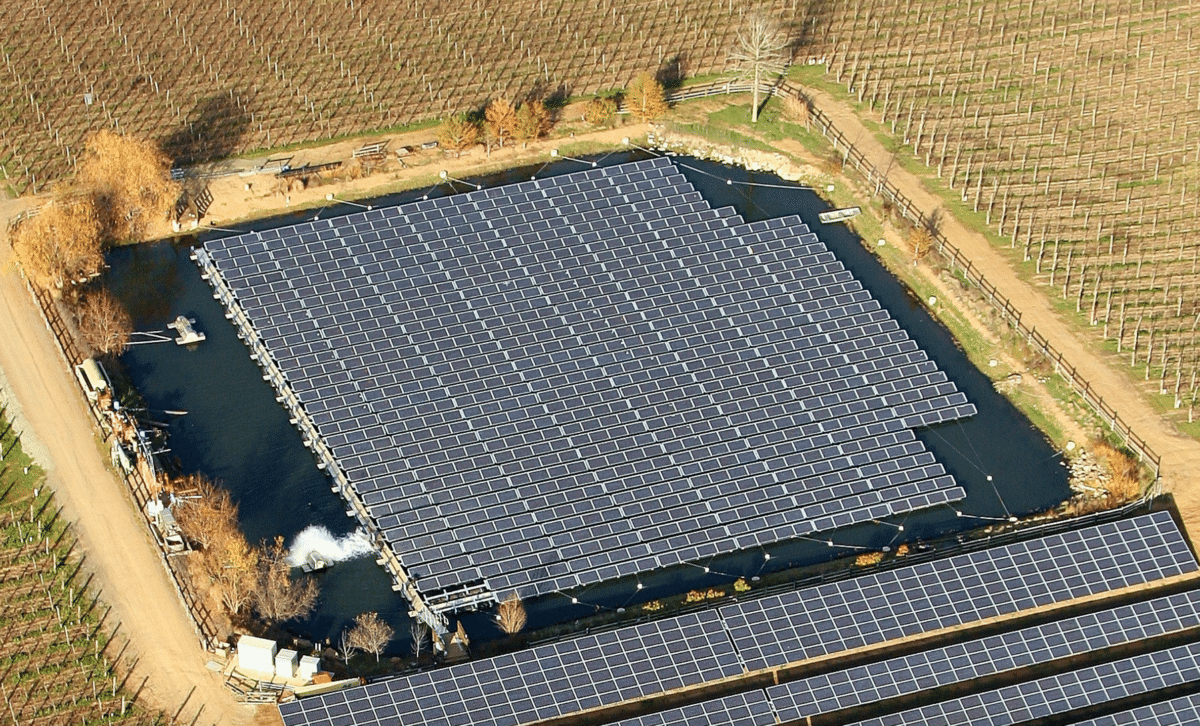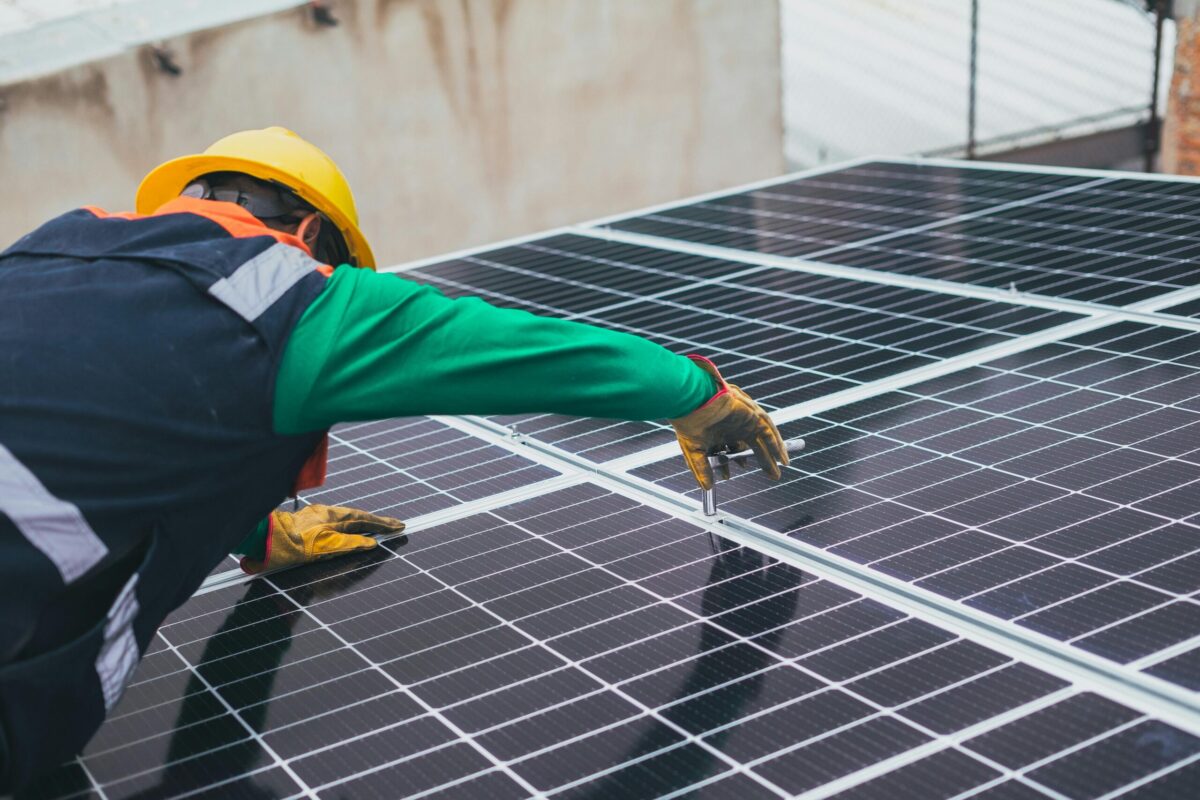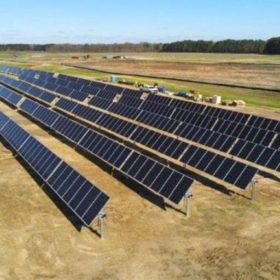The gap between the cost of land-based solar and floating solar has narrowed, and – over the life of a project – floating solar and land-based solar are close to reaching price parity.
Floating solar may have slightly higher capital costs, but it has lower operation and management (O&M) costs, no land costs and the increased efficiency of the panels. “These factors over the system’s lifetime make floating solar as cost-effective and, in some cases less expensive, than land-based systems,” said Stetson Tchividjian, director of business development at D3Energy, a floating solar developer.
The price to install floating solar is about 10% to 15% higher, according to Tchividjian, but floating solar has lower O&M costs because there are no vegetation concerns. Also, the panels stay cleaner because there are minimal dust or silt issues. The lower cost of solar materials and more efficient anchoring and construction practices have also helped push down the cost of floating solar technology.
Currently, the National Renewable Energy Lab (NREL) and the U.S. Department of Energy (DoE) are conducting a study to quantify the impacts and benefits of these floating systems, and one of the main points that they are examining is the cooling effect produced by the fact that floating solar panels are mounted over water. Similar studies conducted in Asia have shown that the increased efficiency ranged anywhere from 10% to 20%, Tchividjian said.
NREL and the DoE’s research is expected out next year.
PV on cooling ponds and stormwater ponds
According to Tchividjian, utilities are already exploring different ways to implement floating solar. “One of the implementations that have piqued utilities’ interest has been the ability to utilize floating solar on their power plants’ cooling ponds. The infrastructure for interconnection is already there, and [the fact that there is] no need for land makes this a straight-forward solution,” he said.
Another approach that utilities are exploring is a distributed generation model. “There are thousands of stormwater ponds that are ideal for this type of installation. Installing floating arrays throughout a territory, with minimal transmission needs, could be ideal… Utilizing these bodies of water would not only make the electric grid more resilient, but [it would] also provide the utilities with a proven distributed generation model,” he added.
Floating solar arrays can also be deployed as an alternative to land-based solar farms in areas were land is in short supply or in dry places where it can be installed at man-made reservoirs to help mitigate evaporation, he said. Two years ago, NREL estimated that installing floating solar photovoltaics on the more than 24,000 man-made U.S. reservoirs could generate about 10% of the nation’s annual electricity production.
“The next phase is large utility-scale projects,” Tchividjian said, noting that he expects large utility-scale projects in the U.S. within the next two years. In Asia, where the floating solar market is more developed, a utility-scale market already exists.
To date, the largest array that D3Energy has built is 1 MW; the largest floating photovoltaic in the U.S. – a 4.4 MW array in New Jersey – utilizes the floating system of D3Energy’s partner, Ciel & Terre.
Four years ago, there were just two floating solar arrays in the U.S., and by the end of this year, there will be over 20, Tchividjian said. D3Energy has over 25 projects in its 2021 pipeline and several other projects are already in their contract phase, he added.
Army gets Southeast’s largest floating PV plant
“Floating solar allowed us to provide energy security and resiliency without reducing training lands,” Audrey Oxendine, Fort Bragg’s energy and utilities branch chief said. It was estimated that seven acres of cleared land would be needed for 1 MW of traditional ground mounted solar, but the 1 MW of floating solar only required two acres of water surface area, she explained.
Ameresco, Duke Energy’s prime contractor, has been tapped to build the 1.1-MW floating solar PV system, which will be paired with a 2-MW battery energy storage system.
Fort Bragg considered floating solar purely for energy security. “Although the [floating solar] cost is comparable to traditional ground-mounted solar, our energy prices make it difficult to see a return on investment on any type of solar project,” Oxendine said, noting that Fort Bragg’s electric prices are very reasonable.
“Once this is implemented and tested, Fort Bragg has other water bodies where this could be utilized. Other [U.S. Department of Defense] facilities are sure to follow, if it is successful,” Oxendine said.
Ft. Bragg’s new solar plus battery system will be connected to Camp Mackall’s electrical distribution system. During normal operations, the solar and battery system will supplement power that it receives from Duke Energy, but during a power outage, the system will operate as part of a microgrid system to support operations. This new floating solar and battery system will be just one part of a $36 million contract aimed at improving the energy resilience and security at Fort Bragg.
Getting in on the ground floor
Cargill’s floating solar push was born out of its bio-industrial business group. For Cargill, floating solar presents an opportunity to get involved when companies are developing new generation projects.
Floating solar projects that use Cargill’s FR3 fluid as the insulating liquid in transformers and other electrical equipment have been built – or are under construction – in Asia, Brazil and India.
“It is essential to have the transformers specified to be insulated with FR3 fluid at the early stages of the project, for the advantages for the transformer design and installations to be effectively considered,” Alan Sbravati, global technical application manager at Cargill BioIndustrial and a dielectric solutions specialist said.
FR3 is 98% bio-based, readily biodegradable, non-toxic in water and soil and carbon neutral. It gives utilities the option of using a dielectric fluid that dramatically minimizes the environmental impact and the health risks if there is a spill over water, and it performs even better than traditional alternatives, Sbravati said. The “conventional transformer oil” would be mineral oil, but the risk of fires or explosions and possibility an accidental spill over water make it an unacceptable option for floating photovoltaics, he added.
“FR3 fluid [also] continuously wicks away moisture from the solid insulation, increasing the reliability and resilience of the transformers and thus of the grid,” Sbravati said. “But the best advantage for solar generation transformers is the exceptional capacity of FR3 fluid of increasing the thermal class of the insulation system. This allows for increasing the peak capacity of more compact transformers, leading to economic savings,” he added.
This content is protected by copyright and may not be reused. If you want to cooperate with us and would like to reuse some of our content, please contact: editors@pv-magazine.com.








By submitting this form you agree to pv magazine using your data for the purposes of publishing your comment.
Your personal data will only be disclosed or otherwise transmitted to third parties for the purposes of spam filtering or if this is necessary for technical maintenance of the website. Any other transfer to third parties will not take place unless this is justified on the basis of applicable data protection regulations or if pv magazine is legally obliged to do so.
You may revoke this consent at any time with effect for the future, in which case your personal data will be deleted immediately. Otherwise, your data will be deleted if pv magazine has processed your request or the purpose of data storage is fulfilled.
Further information on data privacy can be found in our Data Protection Policy.